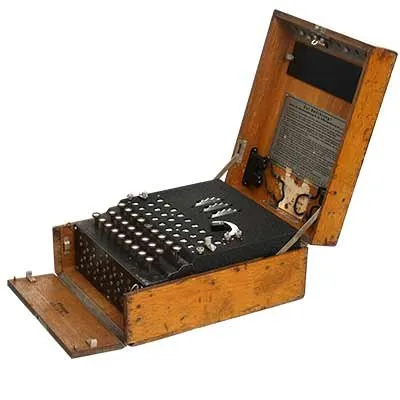EDIT: Hint #3 released! Secure your prize! Scroll to the bottom.
Hello fellow Steemiacs,
we are all engaged with cryptography when we spend time on the various blockchains such as Steemit.
Inspired by recent events, including our dear Steem tokens finally finding increased value appreciation again, I am starting a minnow-level SBD giveaway challenge.
Although I do not have the technical knowledge to understand the mathematics behind SHA256, I very much like the idea of coding and decoding messages and will keep it relatively simple here.
The challenge:
Recently, I was roaming along a far-distant beach and found a bottle on the shore with a papyrus roll inside:

I removed the plug from the bottle and found a weird gibberish message written on the roll:

UDBDUBUUBBUHBHBBHDBDBUUBBHBUBUUUBDBUUUDUUDHHUHDUUUBBUBDBUUUBDUBUDB
What does it mean? I am calling you for help to decipher the message!
In addition, you need to help me encrypt my own message that I intend to mail back to the mystic sender through the ocean:
WHEN WILL ETH DIP
What is in there for you?
The first three participants who correctly manage to decipher the message from the bottle and encrypt my message according to the same encryption rules, can win:
1. 5 SBD + 25% of this post's SBD payout
2. 3 SBD + 15% of this post's SBD payout
3. 2 SBD+ 10% of this post's SBD payout
As a final task, you have to state one fundamental problem with this encryption method.
The rules:
1. Upvote this post (resteeming is optional, yet highly appreciated).
2. Decrypt the message in the bottle, encrypt my message and describe at least one fundamental problem with the applied encryption method.
3. The solution must not be posted in any comment under this post.
4. Once you found a solution, comment under this post that you participate in the challenge and send me your answer either per steemit.chat to @replichara or as a hidden memo according to the form “# answer” (detailed instructions here.)
I will reimburse you the 0.001 SBD that you have to spend to send me the memo.
4. The quickest three participants to send a correct solution will be awarded.
5. As soon as the three winners are found I will edit this post to end the challenge in order for no one to waste their time and efforts.
6. If the challenge is not completed by day 2 after the publication of this post, I will add a first hint towards the solution, by day 4 a second and by day 5 a third hint that should help you to solve the problem!

~~~ I promise you won't need this Enigma machine designed by a German engineer in 1918 and widely used in WW2 (exhibited in the German spionage museum in Berlin) ~~~
Yours, @replichara
Image sources:
(1) Pixabay
(2) Pixabay
(3) Deutsches Spionagemuseum
Hint #1:
The encryption method utilizes three transformation steps.
The first step of the decryption or the last step of the encryption is one of the most basic cryptographic procedures.
The second and third steps of the decryption or the first and second steps of the encryption are the tricky ones, but can be processed within one step if using the appropriate method/tool.
Hint #2:
One of the most basic cryptographic procedures is the shifting of alphabet letters. For instance, every letter of a message becomes substituted by the letter that is two letters ahead in the alphabet: an "A" becomes a "C", a "B" becomes a "D", and so on.
In the last step of the encryption of the message in the bottle, such a letter shifting method is utilized.
Hint #2.1:
Keep it simple, folks!
Hint #3
In 1953 Francis Crick, James Watson, Rosalind Franklin and Maurice Wilkins managed to crack the three-dimensional structure of deoxyribonucleic acid - shortly, DNA. The quintessence of DNA's structure is that two strands of molecular polymers intertwine with each other to form a double helix while each pointing into opposite directions. The beauty of DNA is that knowing the chemical composition of one strand, you automatically know the composition of the second, complementary strand.